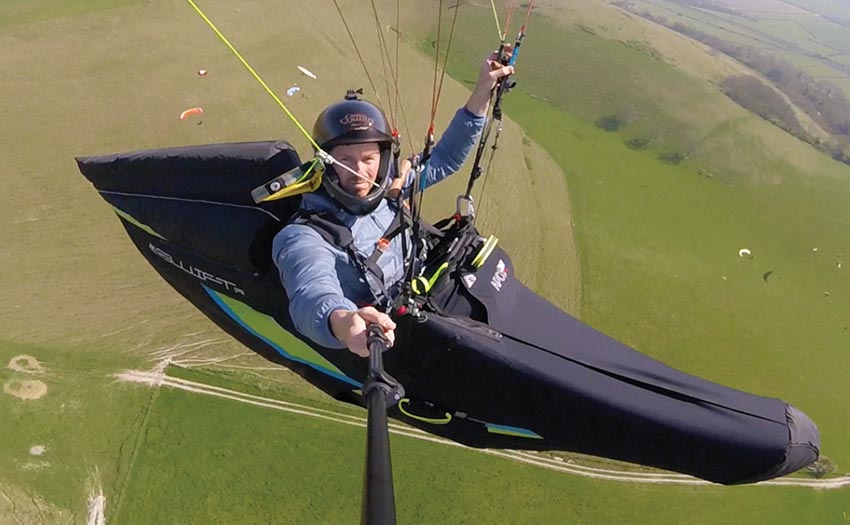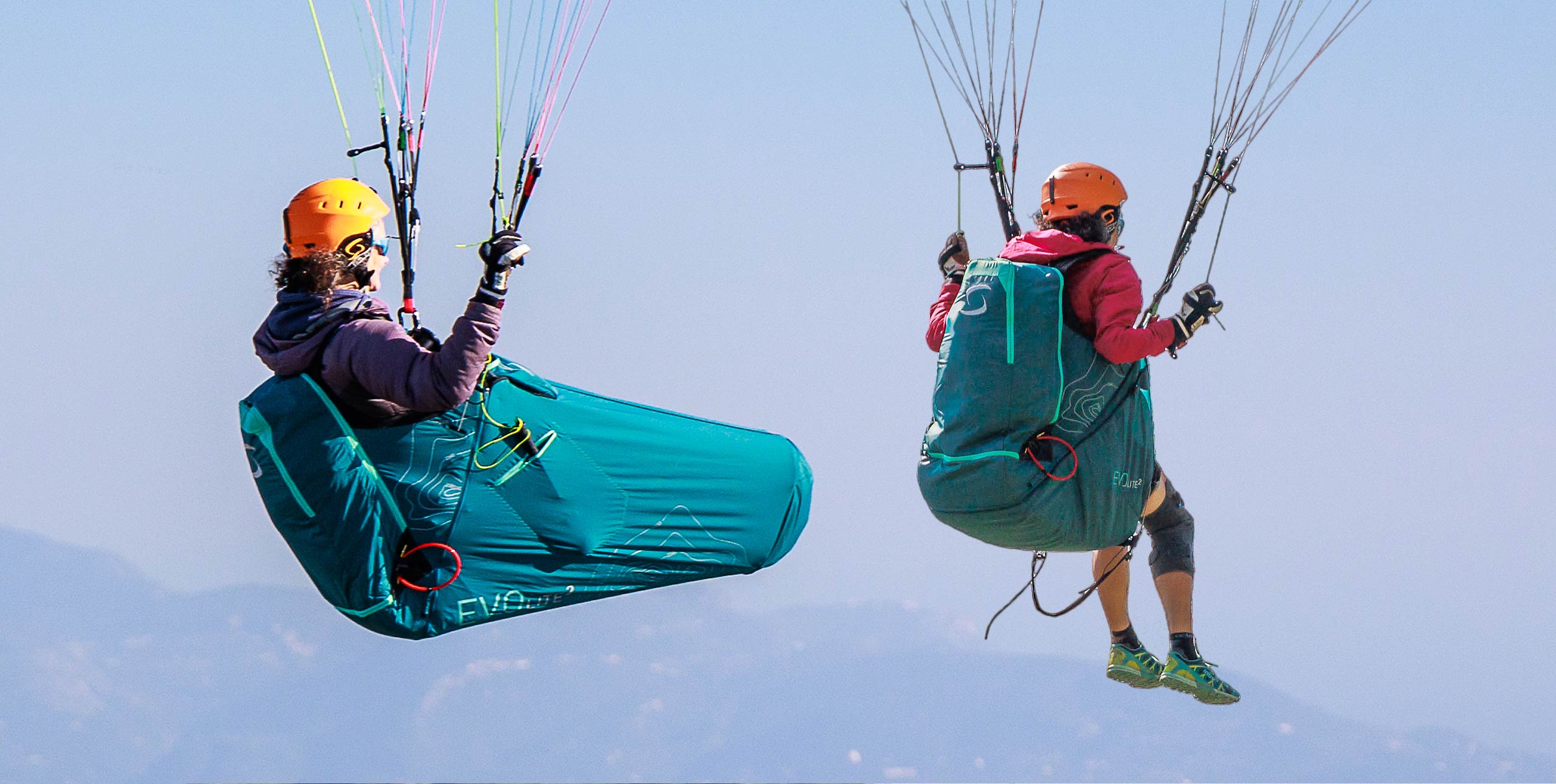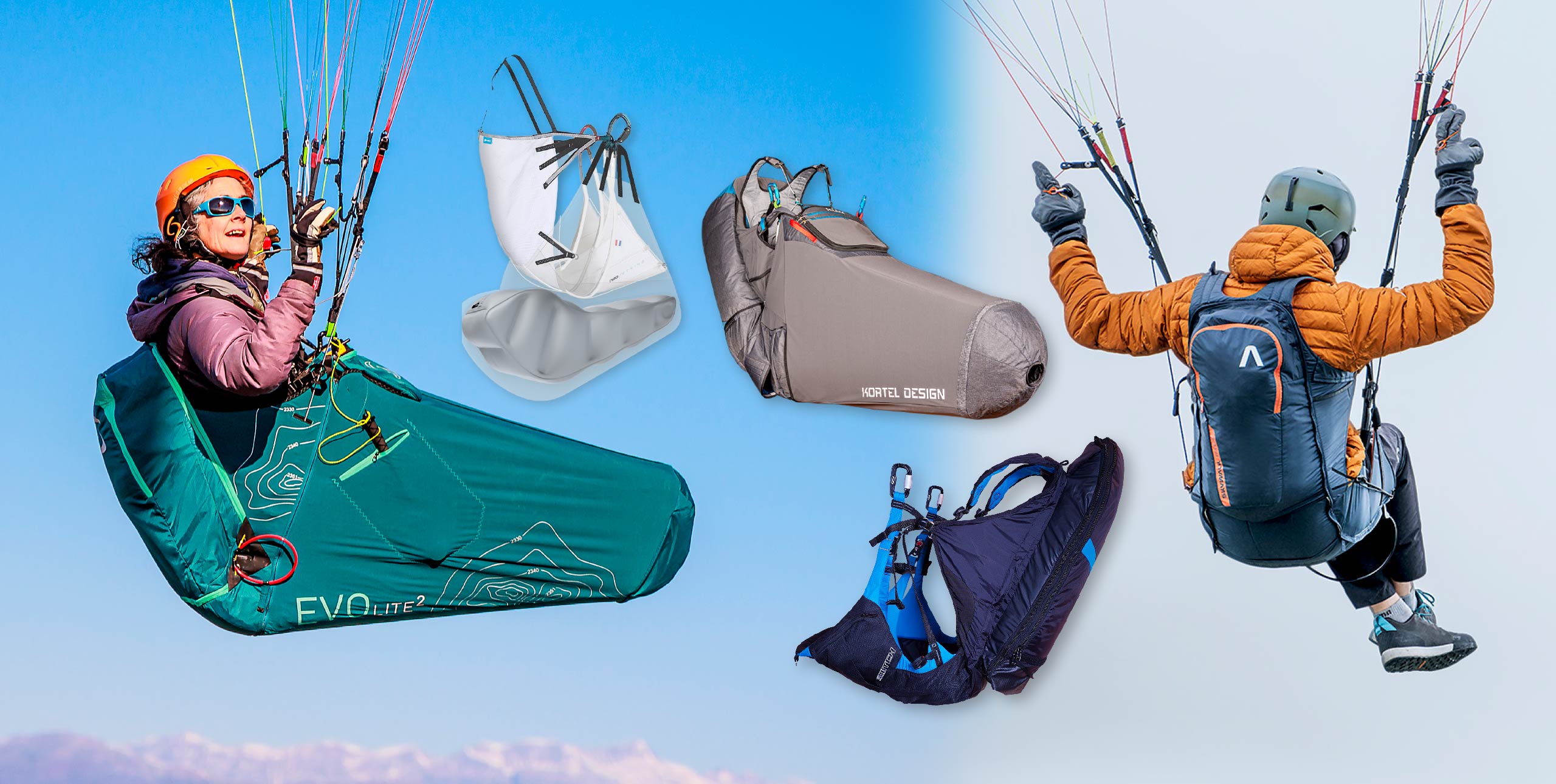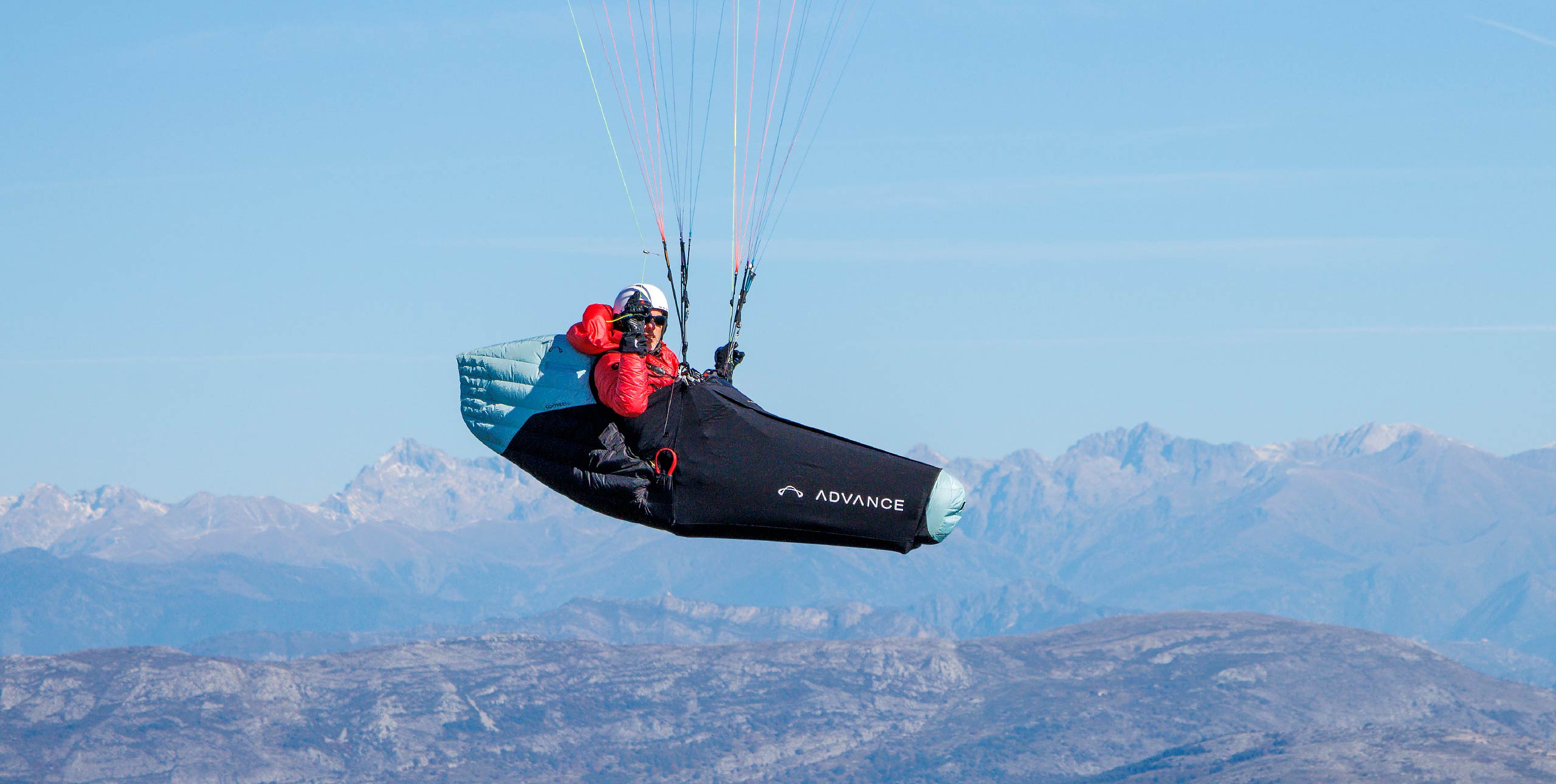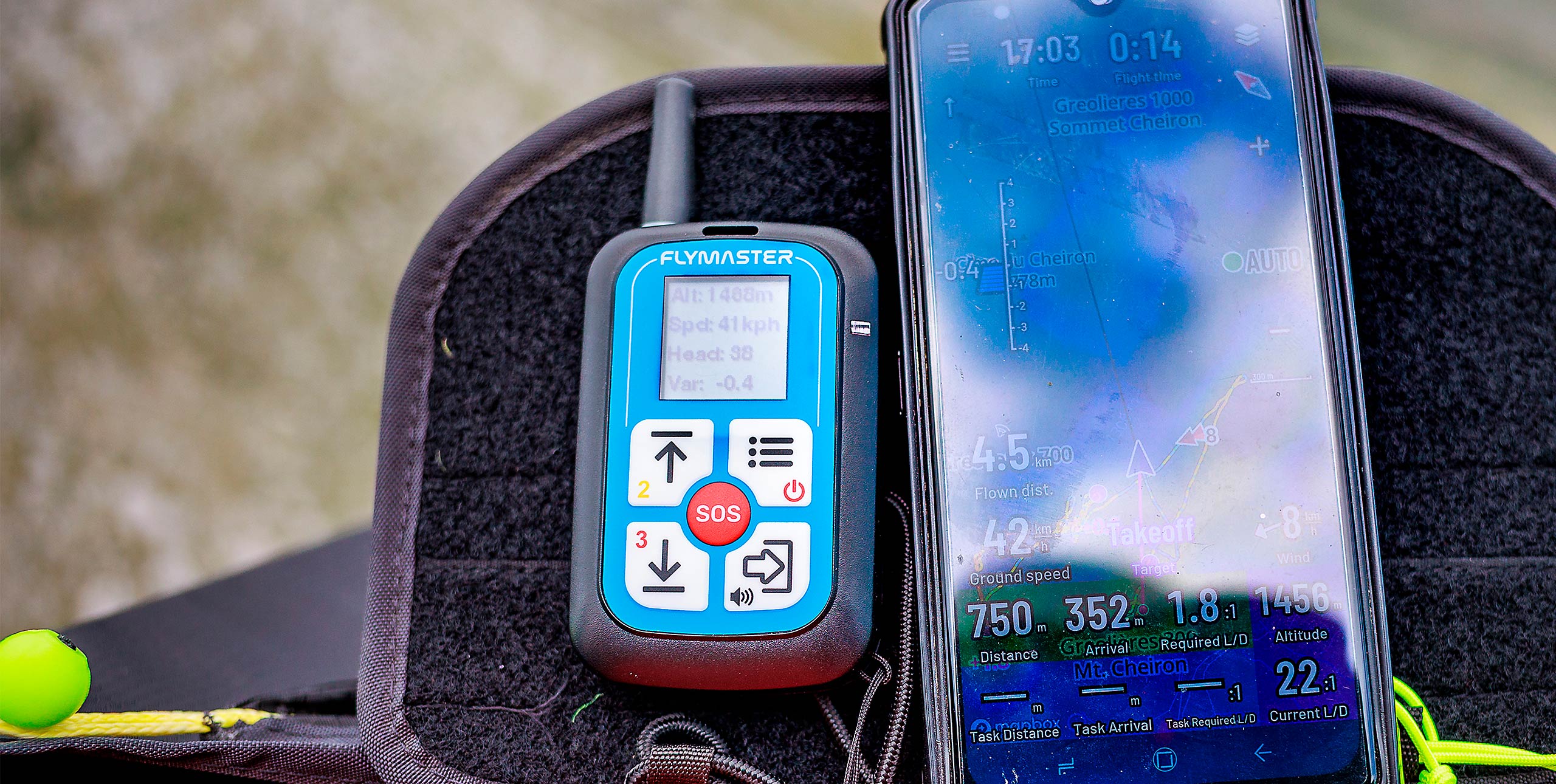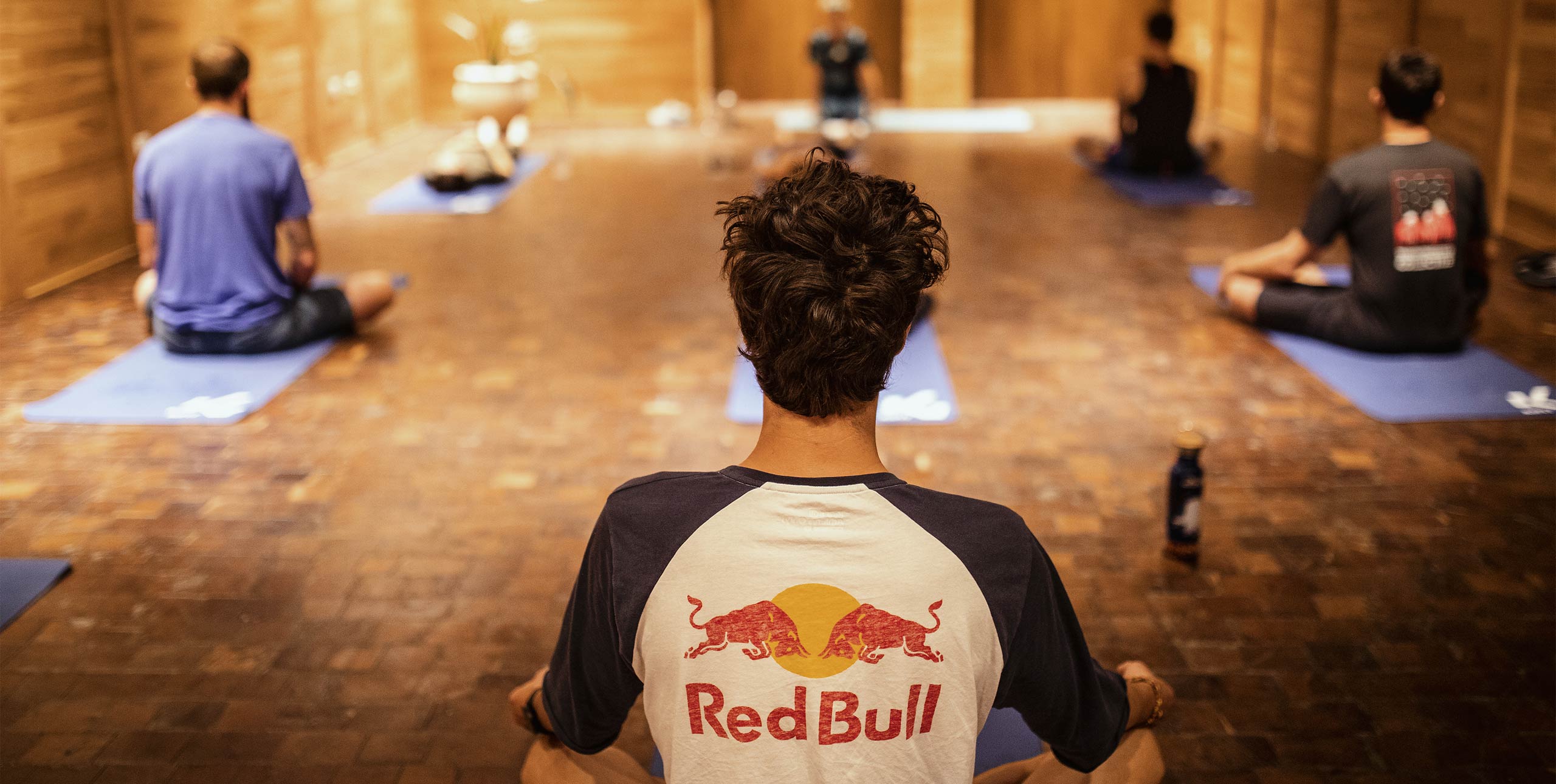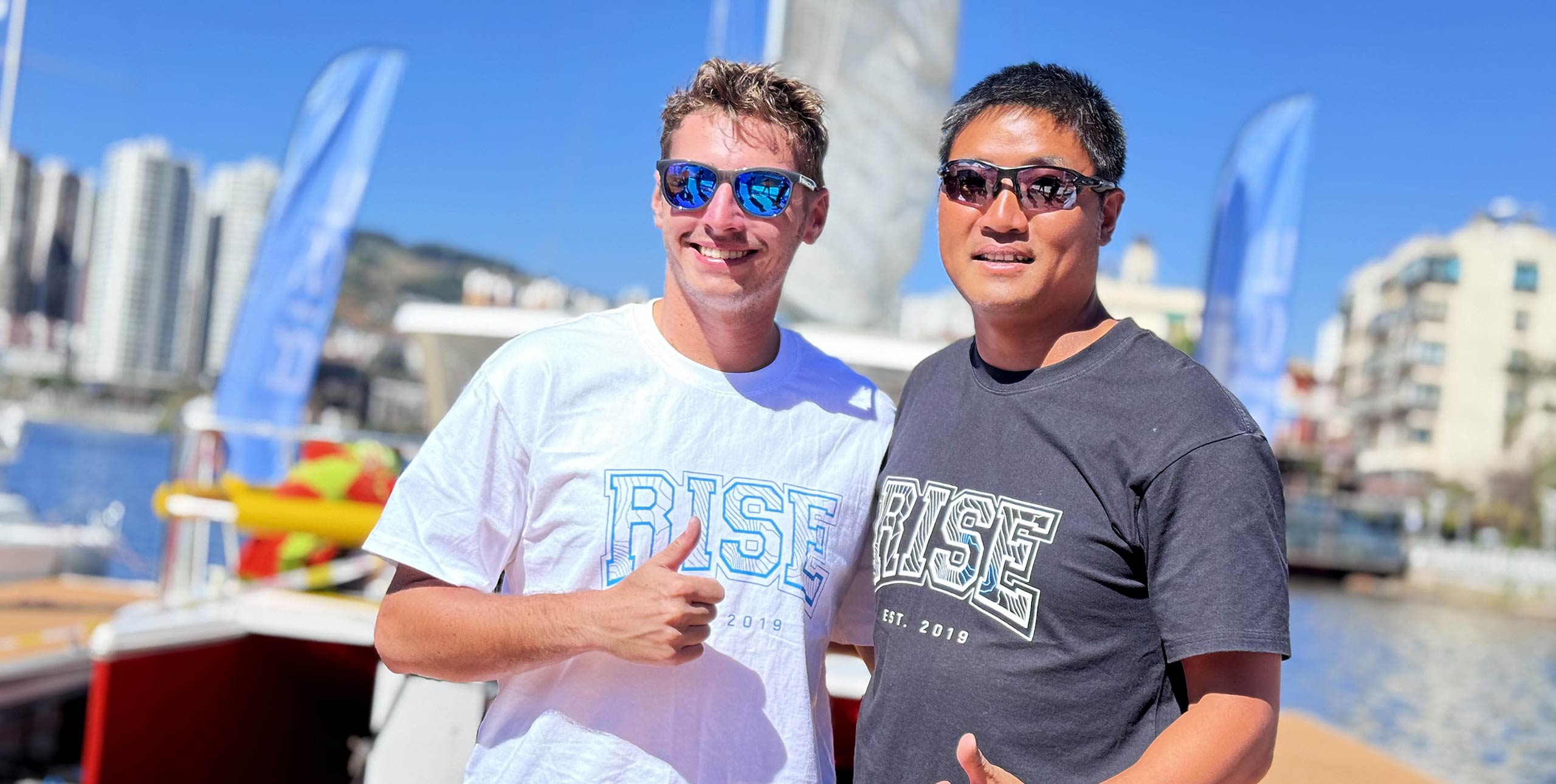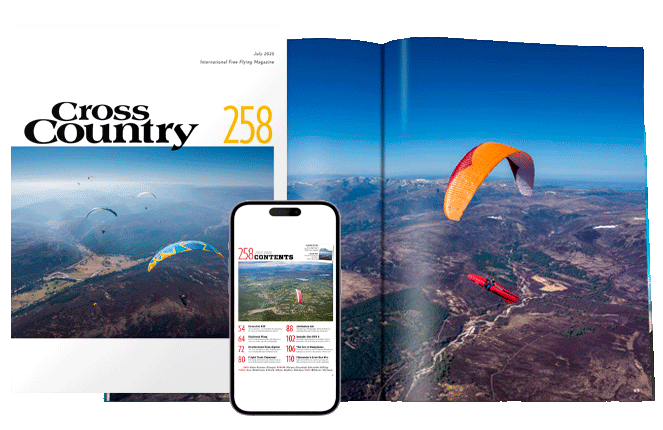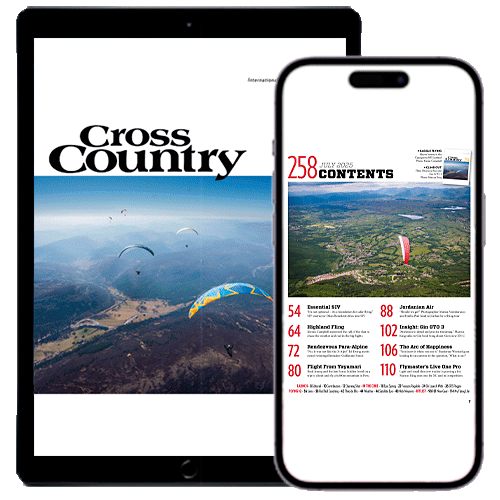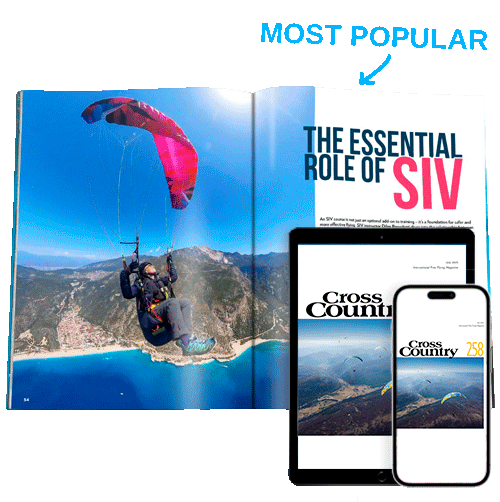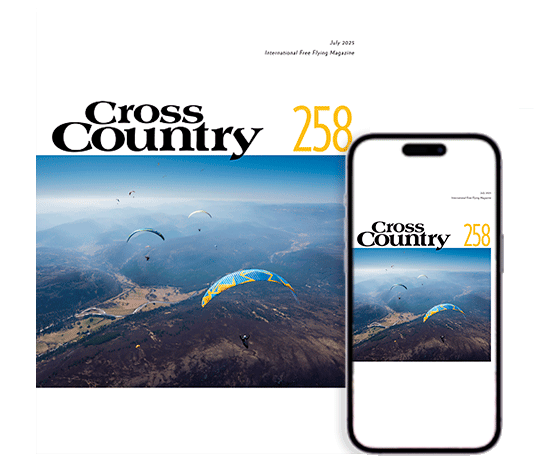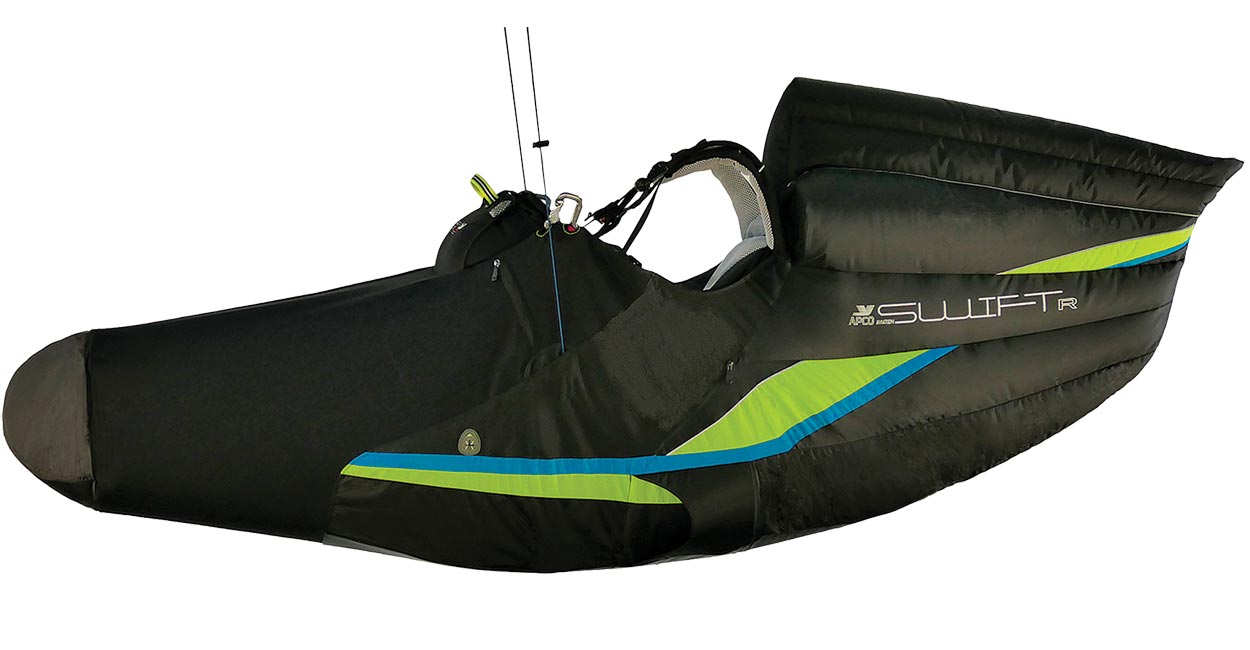
Apco’s first competition harness is turning heads not just for its aerodynamic looks but also its price tag – around €1,100. We flew one through April, logging about 20 hours, from smooth soaring to long-distance XC.
Comfort
We both found the comfort in flight is superb. Lumbar support is fantastic with a nice solid-feeling back support with no pinch points or creases. The mark of a good harness design is when there’s absolutely zero pressure or pull down on the shoulders and the Swift definitely ticks this box. If anything, I found the Swift a smidge more comfortable than the X-R7. There’s more length to play with on the straps too: at 181cm I’m close to the top of the X-R7 L, but in the middle of the Swift’s sizing range. Four hours into a six-hour flight, my lower back started to ache a little, but after landing I discovered one of the pod length straps had worked its way loose which obviously dropped all the tension. A lot of brands use line knots to avoid this happening – it’s worth doubling back on the straps, or even stitching them in once you’ve got the harness tuned.
Feedback
Seatboard geometry feels snug around the hips, giving a lovely, just right, feel to feedback. As with other comp harnesses, it gives a much less bouncy ride than hammock-style harnesses and feels reassuring from the off. The ‘ABS’ straps can be tightened to improve stability, although not in flight. On glide, it feels solid and supportive, helping to cushion turbulence and stop jostling, which can unsettle the wing. Feedback and stability is also good in thermals. Seb found there was a little more movement than with the Exoceat.
Speed system
This is one of the best speed systems I’ve ever used. It’s ultra smooth, reducing leg pressure and improving feedback. Apco’s Jonathan Cohn says they’ve used their own ball-bearing pulleys developed especially for their risers and harness set-ups. Three-stirrup systems always win out over two in my view. They give you more precise control, and reduce fatigue. Plastic-coated lines allow for easier foot positioning for pushing evenly across the wing, and the seatboard design also contributes to easier symmetry when pushing bar.
Anti-G
There’s an anti-G pocket on the left side – the opposite side to the main reserve. Putting it on the same side as the reserve handle is just asking for trouble, so hats off to Apco for getting this right. However, it is rather small – and it’s not easy to pull the Anti-G out in one action.
Storage
As with the XR-7 and Exoceat, the bag storage pocket is in the rear fairing. It’s roomier than the X-R7’s, giving plenty of space for a comp rucksack, drinks system etc. There’s no separate section for the drinks system. The two side pockets are handy for spare gloves and snacks. There’s also a shoulder-mounted radio pocket and hook knife pocket.

Cockpit
Once the cockpit side-strap is tightened, the tilt is perfect. It’s closer to view than the Forza, but the bright yellow reserve handle which sticks proud of the pod is distracting. I’d be tempted to cover it in black tape. Nevertheless, the cockpit can host an Oudie, Kobo and iPhone. There’s a handy battery and accessory pocket pilot-side of the cockpit.
Construction
Apco sent us a Swift back in September but we were unimpressed with the build quality. They later told us it was a prototype. This second, production, version is much improved. It may not look quite as sleek and well finished as an XR-7 and probably won’t last as long as the bulletproof Exoceat, but it is much better value for money.
Reserves
FAI Cat 1 competitions require pilots to fly with two reserves, and most manufacturers recommend them anyway when flying a two-liner. The main reserve compartment uses a combination of a more traditional closure system with a magnetic flap over the top to allow easy pre-flight checking. The front-mounted reserve requires a Y-bridle and hooks into the main karabiners.
Snags
There are some minor annoyances. The side pockets use zips which might prove snag points for lines during set up, or even worse, during a cascade. It’d be nice if these were replaced with magnets, as used on the pod. The drinks system routing is quite tight; I’d leave my drinks system in situ and fill it up on site. Also, the side Anti-G pocket is tight. The drogue chute fits, but it requires a lot of tugs to get it out. The metal rod that adds shape to the fairing also needs some care while packing. I would also replace the supplied karabiners with screw-gates.
Overall
I really enjoyed this harness. It felt immediately comfortable and only required a few minor adjustments to get spot-on. It’s feature rich, even including an integrated whistle. There are some niggles, as there are with all harnesses – I have yet to find the ‘perfect’ harness – but if you’re flying a two-liner, I’m convinced the new generation of wings feel much better with seatboard harnesses. Moving from the Forza to this while flying the Zeno was a revelation. Seb said it’s like adding suspension to a car. The Swift trumps the hugely-popular Exoceat on weight and comfort on the ground, and depending on your height, it might suit you more than an X-R7. Where the Swift wins hands-down is on price. There is a huge market for a harness like this. Give one a go!
Originally reviewed in Cross Country Magazine issue 180, June 2017
To stay up to date and read our reviews first, subscribe to Cross Country

